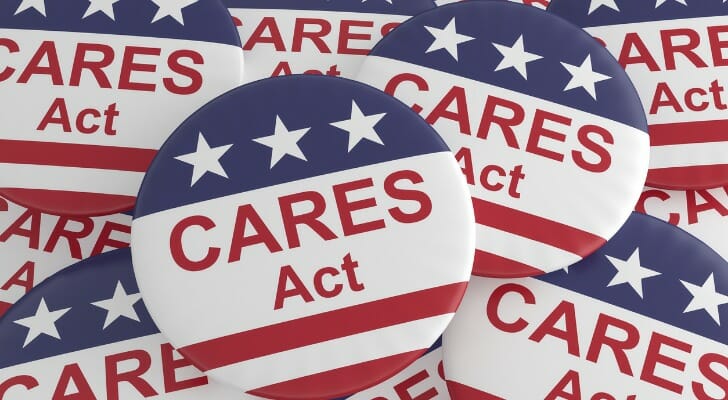 The Small Business Administration (SBA) has a number of programs available for small business owners suffering during the coronavirus pandemic. The most prominent are the Personal Paycheck Program (PPP) loans and the Economic Injury Disaster Loan (EIDL) disbursements, both of which are getting a new round of funding. There are also a number of other existing SBA loan programs that businesses might consider tapping. So if you’re in need of relief during these troubled economic times, which programs should you take advantage of, and how?
The Small Business Administration (SBA) has a number of programs available for small business owners suffering during the coronavirus pandemic. The most prominent are the Personal Paycheck Program (PPP) loans and the Economic Injury Disaster Loan (EIDL) disbursements, both of which are getting a new round of funding. There are also a number of other existing SBA loan programs that businesses might consider tapping. So if you’re in need of relief during these troubled economic times, which programs should you take advantage of, and how?
First, Understand Deadlines and Obligations
Congress and state governments created relief programs to help small businesses suffering from cash flow shortages. Read a summary of state programs here. The most important federal extensions are:
- All federal tax filings and payment have been pushed back by three months for any entity owing less than $1 million.
- Existing small business loans backed by the SBA and qualifying new ones will be paid by the government for six months. Existing disaster loans will receive an automatic deferment.
- Qualifying mortgage holders can get a moratorium on paying their mortgage if they certify in writing that they need it due to the coronavirus.
Taxes, SBA loans and (for property owners) mortgage payments all contribute substantially to a small business’ overhead. Suspending these payments can free up a significant amount of your emergency cash.
Also, be certain to speak with your financial advisor about case-specific options. For example, the CARES Act has created a refundable tax credit for businesses that retain their employees, and several states have established grant programs to help the local business communities. These may all apply to your specific situation, and may help you find needed capital.
Finally, the American Bankers Association has created a data sheet of how individual banks across the country are responding to the coronavirus crisis. You can review this web page to see what options your bank or other financial institutions are offering.
Need Fast Cash? Apply for an EIDL
The CARES Act has expanded funding for the SBA’s Economic Injury Disaster Loan program. Under ordinary circumstances this is a powerful resource for stabilizing your small business in case of a local disaster or emergency, such as an extreme weather event. The EIDL program offers low interest loans (typically set at 3.75%) that require no up-front capital and tend to have relatively limited credit and business history requirements.
A small business can receive up to $2 million in lending and can spend this money on any ordinary business expense such as operating costs, overhead and payroll.
The biggest benefit introduced by the CARES Act is that small businesses that apply for the EIDL program will receive an immediate $10,000 grant. This money is issued within three days of the SBA receiving a business’ application. You can keep the money whether or not the SBA ultimately approves the loan so long as you are a qualified small business with no delinquent SBA debts.
The remainder of the money issued under the EIDL will be a loan that you will have to pay back. Typically repayment happens over a 20- to 30-year period.
Apply for the Paycheck Protection Program

For small businesses, the PPP is the meat of the CARES Act. While the EIDL might be the first stop for many businesses due to the near-immediate access to its $10,000 emergency grant, the PPP gives you access to the largest amount of forgivable debt. Do this as quickly as possible: The first round of funding for the program went quickly, and there are still plenty of businesses competing for that money.
The PPP allows small businesses to apply for eight weeks’ worth of operating costs. The maximum amount you can borrow is approximately 2.5 times your payroll needs for the covered period. The program is capped at $10 million per borrower.
Businesses that receive money under the PPP can spend it on rent, utility payments, interest on debts and any payroll costs (such as wages, salary and benefits). Congress will forgive this debt entirely so long as you spend at least 75% of it on payroll and so long as you keep staffing and pay levels consistent with pre-crisis levels. (If you have laid off staff, you still qualify for debt forgiveness so long as you rehire them.) If you do not meet these requirements, you will repay a portion of the loan based on the extent to which you missed the program’s targets.
You can find a list of PPP loan lenders and their requirements here.
What Order Should You Spend Your Money?
The order in which you spend your money matters. To the extent you have received money under all three of these programs, you should first spend your PPP money. For most borrowers this will be an interest-free grant with spending restrictions. To the extent possible, cover all payroll costs with the PPP, then move on to rent or mortgage payments and utilities.
Spend the EIDL grant next. You can spend this more flexibly than the PPP so you should save it for costs that PPP money may not cover, such as inventory, property insurance or existing vendor contracts. Since this is also a grant, however, you should spend it before any money that you will have to pay back.
Finally, spend EIDL loan money. It is unlikely that you will find another lending plan, private or public, with better interest rates and repayment terms than the EIDL. You should spend this after spending your EIDL grant money, since you will have to pay it back, but before reaching for any other forms of lending.
Next, Apply for an SBA Express Bridge Loan
The SBA has expanded its Express Bridge Loan pilot program. If needed, this should be your next stop.
Any small business that has a pre-existing business relationship with an approved SBA Express Loan lender may apply for up to $25,000 in financing from this program. You may use this money to pay any ordinary and operating business costs so long as they contribute to the “survival/reopening” of your business. This program offers to process applications within 24 to 36 hours, and a lender can set interest rates up to prime plus 6.5%.
If you are subsequently approved for money through the EIDL program, your lender may require you to repay the Express Bridge loan out of the EIDL lending.
Other Loans: SBA 7(a) Express, Export Express or Small Loan
The SBA offers several options for lending beyond its disaster relief programs. In particular, two may be useful if the EIDL runs out of funding or if you can’t find a lender willing to process a PPP loan.
The SBA Express Loan is designed for businesses which need immediate cash. Through this program you can receive up to $350,000 at an interest rate set by the lender (although at time of writing the SBA set a maximum interest rate of prime plus 6.5%). This program offers to have a decision from the SBA within 36 hours. Borrowers should be aware that the agency is likely to be overwhelmed with processing EIDL and PPP loan applications, however, so it may take longer than usual.
An SBA Small Loan also provides up to $350,000 in funding backed by the Small Business Administration. The interest rate is the same, and processing time is between 5 and 10 business days during ordinary business periods. While the small loan takes longer to process, it is also generally easier to get as the SBA backs a larger percentage of small loans than express loans.
Finally, small businesses focused on international exports can apply for the Export Express loan. This is provides up to $500,000 in funding with 90% of the loan backed by the SBA, making it far more likely that a third party lender will approve this borrowing. The program promises to respond within 24 hours of your application but, again, borrowers should prepare for unusual delays. As above, interest rates and terms are set by the lender up to the SBA maximum.
In all cases you should expect that the lender may require some up-front capital or collateral.
Cost Savings: Negotiate With Landlords, Contractors, Others

The CARES Act has established that no payment agreements reached during the coronavirus crisis can affect credit scores (either for businesses or individuals). This means that while missing a payment to someone can hurt your credit, arranging to reduce that payment cannot.
If none of the available government financing programs are enough, your next best step is to negotiate directly with your debtors. Start with your landlord. Seek to reduce your rent or arrange a payment plan. While many landlords have responded to the coronavirus crisis by squeezing their tenants, some do understand that driving tenants into bankruptcy is bad for their own business in the long run.
From there, try to restructure any debt that you owe to parties such as contractors, vendors, banks and credit card companies. First, seek a simple moratorium on payments, with regular payments to resume once the crisis has passed. If they won’t accept that, see if you can arrange a plan that reduces your payments now and spreads them out over a period of time. Like your landlord, hopefully they will understand that it is in everyone’s best interest to help your business survive the current crisis so that you can pay them in full later.
Still Need Cash? Seek Private Lending
Finally, don’t overlook the private sector.
This may not be your best option. However, if you have no better options, or if the SBA programs aren’t meeting your liquidity needs, you can seek private lending. Start with the bank your business currently uses, then particularly focus on local and community-oriented banks that will have a specific interest in helping local businesses survive.
If you are a small restaurant or shop that has been shut down by government order, your needs may be relatively limited compared to the scope of lending banks typically offer. If you need only enough money to pay the absolute essentials such as rent, insurance and local taxes, a bank may be willing to extend that limited line of credit.
The Bottom Line
As a small business owner you actually have a wide variety of resources available to you right now, from federal, state and even in some cases local governments. Follow this road map to see exactly what you should start doing to help your small business survive and thrive.
Tips for Accessing Government Help
- Many financial advisors specialize in working with business owners. Finding the right financial advisor who fits your needs doesn’t have to be hard. SmartAsset’s free tool matches you with financial advisors in your area in five minutes. If you’re ready to be matched with local advisors who will help you achieve your financial goals, get started now.
- Besides PPP loans and EIDL grants, there are many other ways that various governmental entities are responding to the pandemic. For example, there is the SBA 504 Loan Program and the Microloan Program.
Photo credit: ©iStock.com/FG Trade, ©iStock.com/cbies, ©iStock.com/YakobchukOlena